How to Do Kettlebell Swings With a Dumbbell: A Step-by-Step Guide
Share
How to Do Kettlebell Swings With a Dumbbell: A Step-by-Step Guide
Introduction: Why Swap Kettlebells for Dumbbells?
Not everyone has a kettlebell sitting in their home gym—and that’s okay. The good news? You don’t need one to unlock the fat-burning, muscle-building magic of kettlebell swings. With just a dumbbell, you can mimic the same explosive movements and get nearly identical results.
So, if you’ve ever wondered how to do kettlebell swings with a dumbbell, this guide has you covered. Whether you’re a beginner with limited equipment or a seasoned lifter looking for variety, dumbbells can absolutely step up and do the job.
What Makes a Kettlebell Swing Special?
Kettlebell swings are famous for their dynamic power. They’re not just about building muscle—they torch calories, build endurance, and improve hip drive. The unique shape of the kettlebell, with its offset handle and weight distribution, forces your body to stabilize differently than with traditional lifts.
But here’s the secret: the magic isn’t in the kettlebell—it’s in the hip hinge motion. That’s why dumbbells make such a great substitute. As long as you use proper form, you’ll still target your glutes, hamstrings, core, and shoulders effectively.
Choosing the Right Dumbbell for Swings
Before you jump into your swings, let’s make sure you’ve got the right gear:
-
Weight Range:
Beginners can start with 15–25 lbs. More advanced lifters might use 30–50 lbs (or more). The goal is a weight heavy enough to challenge you, but not so heavy that your form breaks down. -
Grip Style:
Hold one end of the dumbbell vertically with both hands around the top plate. This mimics the kettlebell handle. -
Safety Check:
Ensure your dumbbell has secure ends and isn’t loose. The last thing you want is a plate flying mid-swing.
Pro Tip: If you want a piece of equipment that adapts to your progress, check out the Adjustable Dumbbell Kettlebell Barbell Set. It combines all three tools in one compact design, making it perfect for swings, presses, curls, and more.
Step-by-Step: How to Do Kettlebell Swings With a Dumbbell
Step 1: Setup
- Stand with your feet shoulder-width apart.
- Place the dumbbell on the floor between your feet, standing vertically.
- Bend slightly at the knees and hinge at your hips to grab the top end of the dumbbell with both hands.
Step 2: Engage Your Core
- Keep your chest up and shoulders back.
- Brace your core as if you’re about to take a punch.
Step 3: The Swing
- Drive your hips back, then thrust them forward explosively.
- Use the momentum of your hip hinge to swing the dumbbell up to chest level.
- Arms should remain straight but relaxed—don’t “lift” with your arms.
Step 4: The Descent
- Let the dumbbell swing back down between your legs under control.
- Maintain your hip hinge, not a squat. Your back should stay flat, not rounded.
Step 5: Repeat
- Perform 10–15 reps for beginners, 20–25 for more advanced lifters.
- Focus on smooth, controlled movements instead of rushing.
Common Mistakes to Avoid
Even with a dumbbell, the same bad habits can creep in. Here’s what to watch out for:
- Squatting instead of hinging: The swing is about the hips, not a squat.
- Lifting with arms: Your shoulders guide the dumbbell, but the power comes from your hips.
- Rounding the back: Keep a neutral spine to avoid injury.
- Going too heavy, too soon: Master form before loading up.
Workout Variations Using Dumbbells Instead of Kettlebells
- Two-Handed Dumbbell Swing – Classic version, perfect for beginners.
- Single-Arm Dumbbell Swing – Increases core activation and grip strength.
- Dumbbell Swing to Squat Combo – Adds a lower-body challenge.
- Dumbbell Swing to Press – Swing up, then press overhead for a full-body burn.
- Circuit Training with Swings – Add swings to burpees, push-ups, or planks for HIIT workouts.
Benefits of Dumbbell Swings
Using a dumbbell instead of a kettlebell isn’t just a backup plan—it’s a smart training strategy. Here’s why:
- Full-body workout with one piece of equipment
- Perfect for small spaces and home gyms
- Budget-friendly alternative to kettlebells
- Easy to learn and adjust for beginners
- Builds strength, power, endurance, and fat loss
FAQs
Q: Can dumbbells fully replace kettlebells?
Yes—for most exercises, dumbbells can replicate kettlebell movements. The feel is slightly different, but the benefits remain.
Q: What’s the best dumbbell weight for swings?
Beginners: 15–25 lbs. Intermediate/advanced: 30–50 lbs or more. Choose a weight you can control with good form.
Q: Are dumbbell swings safe for beginners?
Absolutely. Start light, focus on the hip hinge, and progress gradually.
Q: Which burns more calories—kettlebell or dumbbell swings?
Both are highly effective. Your intensity, form, and consistency matter more than the tool itself.
Conclusion: You Don’t Need a Kettlebell to Crush Your Swings
Kettlebells are fantastic—but they’re not essential. With a simple dumbbell, you can perform swings, build strength, burn calories, and enjoy all the benefits of kettlebell training.
The key is learning proper form and picking a dumbbell weight that challenges you without compromising safety.
If you’re looking for a versatile, space-saving solution, the Adjustable Dumbbell Kettlebell Barbell Set gives you the best of all worlds in one piece of equipment. Your home gym (and your gains) will thank you.
